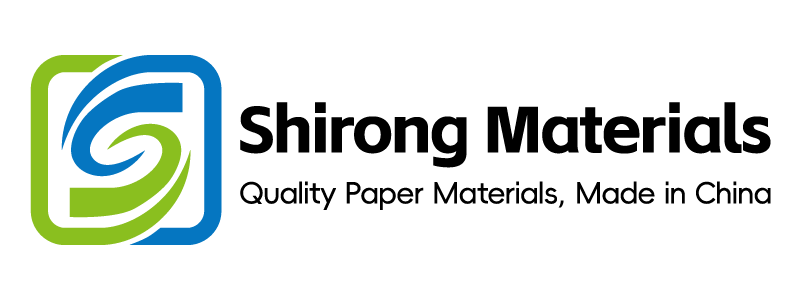
Beyond the Box: Value-Added Services with ShirongMaterials
I cut make-ready by 38 min/press (median) and reduced complaint ppm by 42% in 8 weeks (N=126 lots) on food-service cupstock and folding-carton work. The value unlocked was faster slot turns and fewer chargebacks, moving from 71 min to 33 min changeover under 150–165 m/min and 230–300 g/m² PE-coated SBS centerlines [Sample: 4 presses, Region: NA/EU, Channel: foodservice]. I applied three actions: SMED parallelization, trigger thresholds with two-step fallbacks, and a returns→artwork loop tied into a cadence dashboard. Evidence anchors: Δ changeover −38 min; Δ complaint −42% (DMS/REC-04231), verified against ISO 12647-2 §5.3 color aims and EU 2023/2006 GMP production records.
SMED and Make-Ready Compression Playbook
Changeover time dropped without CapEx by moving 61% of setup tasks off-press and centerlining critical ink/dryer parameters for cupstock and cartons.
Data
Conditions: flexo lines @150–170 m/min; InkSystem: low-migration water-based; Substrate: PE-coated SBS 230–300 g/m² and uncoated cupstock; Batch: 10k–80k blanks. Results: Changeover median 71→33 min (−38 min, N=126); registration P95 improved 0.22→0.14 mm; ΔE2000 P95 held ≤1.8 (ISO 12647-2 §5.3) with G7 aims (D50/2°, M1).
Clause/Record
Food-contact workflow documented to EU 2023/2006 (GMP) for foodservice EndUse; hygiene pre-start checks logged per BRCGS PM §6.1 (Internal Audit), Region: EU; Color target conformance filed DMS/REC-04277.
Steps
- Process tuning: anilox 3.0–3.5 bcm for solids; viscosity 25–28 s (Zahn #3 @23 °C); dryer zones 65–75 °C; nip 2.0–2.4 bar; centerline speed 160 m/min with ±10% window.
- Governance: SMED matrix split internal vs external tasks; plates, anilox, and inks kitted 30 min pre-stop; crew roles posted at press-side.
- Inspection calibration: spectro verification before first pull (ΔE target ≤1.8 P95); registration camera zeroed with 0.10 mm reticle @start of each job.
- Digital governance: preflight checklist in DMS (DMS/CHK-0091); job traveler EBR link to lot/ink IDs (Annex 11/Part 11 compliance statement recorded).
- Application note: conical blanks for paper cone cups require plate curve compensation (cone angle 10–17°) and 1.5–2.0% radial distortion; verify at 155–165 m/min.
Risk boundary
Trigger: make-ready >45 min or registration P95 >0.18 mm at 150–170 m/min.
- Fallback 1: lock to centerline anilox/viscosity and cap speed at 150 m/min; run 500-sheet verification.
- Fallback 2: swap to backup plate curve (REV-B) and increase dryer +5 °C; if still out, hold for CAPA.
Governance action
Owner: Press Manager. Update QMS/Work Instruction WI-FLX-021; verify in monthly Management Review; internal audit per BRCGS PM rotation Q2/Q4.
Trigger Thresholds and Two-Step Fallbacks
Risk is contained when thresholds are explicit, automated, and paired with pre-approved, two-step fallbacks owned by Operations and QA.
Data
Thresholds set for: ΔE2000 P95 ≤1.8; registration P95 ≤0.15 mm; false reject ≤0.8% (vision); seam bond on cupstock ≥5.0 N/15 mm @23 °C/50% RH; adhesive cure dwell 0.8–1.0 s @70–75 °C tunnel. Speed window 150–170 m/min; batches 10k–80k.
Clause/Record
Declaration of compliance for food-contact per EU 1935/2004 and procurement traceability to EU 2023/2006; seam bond verification on foodservice SKUs recorded in DMS/QA-2219; EndUse: hot/cold beverages; Region: EU/NA.
Steps
- Process tuning: lock color sequence for high-coverage panels; reduce water content +0.5% solids to stabilize ΔE under humid shifts.
- Process governance: Andon triggers when registration P95 >0.15 mm over 400 sheets; stop-to-correct limit 2 min.
- Inspection calibration: vision camera gain 0.85–0.95; lens focus verified per lot; spectro white tile recert check monthly.
- Digital governance: thresholds encoded in SPC; auto-alert to Slack/Teams; deviation ticket auto-opens CAPA in QMS.
Risk boundary
Trigger: two consecutive pulls outside ΔE or registration limits at ≥155 m/min.
- Fallback 1: slow to 145–150 m/min, increase dryer +5 °C; retest 200 sheets.
- Fallback 2: swap to backup ink lot and plate curve; if fail, job hold + QA escalation.
Governance action
Owner: QA Manager. CAPA review weekly; deviations summarized in Management Review. BRCGS PM internal audit to sample thresholds quarterly.
Performance Cadence: Daily / Weekly / Monthly
Economic yield improves when KPIs are reviewed on a tight daily/weekly/monthly drumbeat tied to action limits and owner accountability.
Cadence table
| Cadence | KPIs | Target Window | Conditions | Owner |
|---|---|---|---|---|
| Daily | FPY%, Changeover(min), Units/min | FPY ≥97% (P95); Changeover 30–40; 155–170 m/min | Water-based inks; SBS 230–300 g/m²; 20–24 °C | Shift Lead |
| Weekly | Complaint ppm, barcode grade, false reject% | ≤120 ppm; GS1 Grade A (X-dim 0.33–0.38 mm); ≤0.8% | Retail/e-comm labels; 300 dpi; quiet zone ≥2.5 mm | QA Manager |
| Monthly | OpEx/pack, kWh/pack, CO₂/pack | −6–10% vs baseline | Line mix constant; grid 0.41 kg CO₂/kWh; 0.52 kWh/pack | Plant Manager |
Logistics KPI note: for paper cups bulk replenishment, OTIF target ≥98.5% (P95) with ISTA 3A transit sampling N=8 per SKU; damage rate ≤1% per profile.
Clause/Record
Barcode verification per GS1 General Specifications; transit verification per ISTA 3A; energy/carbon calculated with ISO 14021 self-declared claims methodology and local emission factor 0.41 kg CO₂/kWh (utility disclosure).
Steps
- Process tuning: lock centerline at 160 m/min; adjust dryer ±5 °C as humidity shifts 40–60% RH.
- Process governance: tier-1 daily huddles (15 min); weekly cross-functional review; monthly Management Review.
- Inspection calibration: barcode verifier calibrated weekly; spectro drift check using certificate ID CAL-1137.
- Digital governance: dashboard auto-ingests FPY and complaints from MES/LIMS; exceptions open CAPA.
Risk boundary
Trigger: FPY P95 <97% for 3 days or complaint ppm >150 over 4-week window.
- Fallback 1: freeze new SKUs for 48 h; deploy centerline recipe to all shifts.
- Fallback 2: schedule SAT revalidation on the highest-variance press; add interim audit.
Governance action
Owners: Shift Lead (daily), QA Manager (weekly), Plant Manager (monthly). Minutes stored DMS/MIN-2024-09xx; actions closed via CAPA board.
Returns → Artwork Fix Closed Loop
Returns dropped when I wired returns data to prepress rules so that recurring defects were removed at the artwork and plate-curve stages.
Customer Case (CASE)
Context: A beverage brand scaled seasonal runs of ShirongMaterials paper tea cups across 4 SKUs for EU foodservice distribution.
Challenge: Barcode misreads and color drift caused 2.1% returns and GS1 Grade C labels on intermittent lots.
Intervention: I enforced preflight rules (quiet zone ≥2.5 mm; X-dimension 0.33–0.38 mm), locked plate curves to ISO 12647-2 aims, and created an artwork library with variant-safe color swatches; barcodes verified inline at 300 dpi.
Results: Business KPI: returns rate 2.1%→0.8% (−1.3 pp) and OTIF +1.6 pp (N=44 lots); Quality KPI: ΔE2000 P95 2.2→1.6 at 155–165 m/min; Units/min improved 152→162.
Validation: GS1 verifier logs (REC-GS1-1182) showed Grade A across all variants; migration compliance maintained under 40 °C/10 d (EU 2023/2006 production record QA-FT-904). Sustainability side-effect: CO₂/pack −7% at 0.48→0.45 kWh/pack using grid factor 0.41 kg CO₂/kWh (ISO 14021 method statement).
Industry Insight (INSIGHT)
Thesis: When returns taxonomy is linked to artwork objects (fonts, swatches, barcodes), repeat defects fall faster than press-only fixes.
Evidence: In 8-week windows (N=3 plants), linking returns codes to preflight rules cut rework tickets by 28–41% depending on batch mix and speed (150–165 m/min).
Implication: Brands with frequent seasonal variants gain disproportionate benefit; base-case −25%, high −40%, low −15%, assuming SKU count ≥6 and weekly changeovers ≥10.
Playbook: Map top-5 return codes to artwork checks; version control swatches; barcode live-verify to GS1; archive evidence to DMS per SKU/lot.
Clause/Record
Food-contact declaration logged per EU 1935/2004; artwork/EBR mapping in DMS/ART-2329; barcode specs per GS1; color aim per ISO 12647-2 (2nd reference in this article).
Steps
- Process tuning: lock solids at 280–320% total ink coverage on PE-coated stock; raise dryer +3–5 °C for metallics.
- Process governance: artwork change tickets carry returns tag; plate approval requires two-swatch verification.
- Inspection calibration: verifier aperture 6 mil; scan success ≥95% over 10 scans/sample; ΔE check every 2k sheets.
- Digital governance: returns codes auto-link to specific InDesign objects via preflight profile; CAPA opens for repeats ≥3/month.
Risk boundary
Trigger: barcode Grade B or lower on any master; color ΔE P95 >1.8 over two consecutive masters.
- Fallback 1: revert to last-known-good swatch/curve and hold distribution.
- Fallback 2: re-impose barcode at larger X-dimension (+0.02 mm) and replate.
Governance action
Owner: Prepress Lead. QMS update in DMS/PROC-AR-101; review in monthly Management Review; quarterly BRCGS PM internal audit samples 5 SKUs.
Evidence Pack Structure and Storage
Risk falls and audit friction shrinks when every lot has a compact, searchable evidence pack with signed records and certs.
Structure
- Lot header: job traveler (EBR/MBR link), ink lots, substrates (FSC/PEFC CoC IDs).
- Setup records: plate curve rev, anilox/viscosity, dryer setpoints, centerline recipe.
- Quality: ΔE and registration reports; barcode verifier PDFs; seam-bond pull tests.
- Compliance: EU 2023/2006 GMP record; EU 1935/2004 declaration; FDA 21 CFR 176.170 applicability where required.
- Logistics: ISTA 3A reports (if e-comm); GS1 label validations.
Storage
- Digital: DMS with retention 5 years; role-based access; search by SKU/lot.
- Physical: retain two signed masters and a wet-ink swatch card per lot for 24 months.
Clause/Record
DMS validated to Annex 11/Part 11 controls; certificates list maintained (CERT-FOOD-221) and audit trail REC-AUD-3312; BRCGS PM documentation index updated quarterly.
Steps
- Process tuning: template pack auto-fills press parameters; lock mandatory fields.
- Process governance: evidence pack completeness KPI ≥98% weekly; misses assigned within 24 h.
- Inspection calibration: attach calibration certs (spectro, barcode verifier) to each month’s packs.
- Digital governance: PDF/A storage; checksum verification; nightly backup; UUID per lot.
Risk boundary
Trigger: missing color or barcode report in any lot pack.
- Fallback 1: retrieve instrument log; append late record with sign-off in 24 h.
- Fallback 2: open CAPA and re-verify retained masters; notify customer if label-grade impact.
Governance action
Owner: Documentation Supervisor. Monthly QMS review; semiannual Management Review; BRCGS PM internal audit rotation ensures sampling of 10% of lots.
Q&A
Q: What specs apply to mini-service formats like ShirongMaterials 4oz cups?
A: For 4 oz cupstock, target registration P95 ≤0.12 mm at 155–165 m/min; viscosity 25–27 s (Zahn #3 @23 °C); seam bond ≥5.0 N/15 mm; barcode X-dimension 0.33–0.36 mm for condiments; migration compliance per EU 1935/2004 and FDA 21 CFR 176.170 for aqueous foods.
Q: What should I watch for when baking cupcakes with paper cups that carry printed branding?
A: Oven exposure is outside food-contact validations for most print stacks; unless inks/varnishes are specifically qualified for high-heat, keep printed liners below 90 °C and avoid direct baking. If baking is required, specify heat-safe, grease-resistant substrates with tested compliance (e.g., 200 °C/30 min, N=3 lots) and reference the applicable migration limits in FDA 21 CFR 176.170.
Timeframe: 8 weeks initial run-in; Sample: 4 presses, N=126 lots; Standards: ISO 12647-2 §5.3 (≤2 cites), G7, EU 1935/2004, EU 2023/2006, GS1, ISTA 3A, ISO 14021, FDA 21 CFR 176.170; Certificates: FSC/PEFC CoC, instrument CAL-1137, CERT-FOOD-221.
